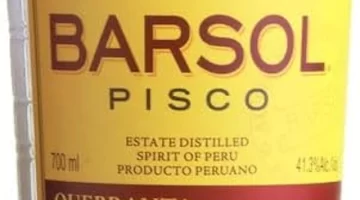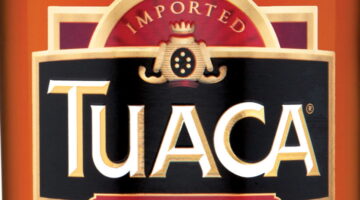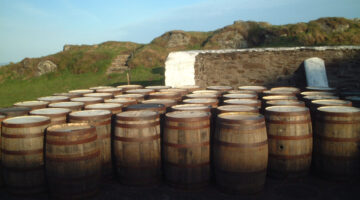What is Grappa?
Travel Distilled explains what grappa is, the history of this Italian spirit, how and where it’s made, how to drink it and its use in cocktails and cooking.
Grappa is a potent Italian spirit with an alcoholic strength of between 35-60%. Originating from Italy, this distillate is renowned worldwide for its robust taste, derived from grape pomace, the residual parts of the grape (the seeds, pulp, and skins) left over after winemaking.

What is Grappa’s History?
The history of grappa dates back to the Middle Ages. As an economical measure, farmers and grape growers across Italy started the process of reusing their leftover grape skins and seeds for creating a rudimentary spirit.
Over time, the process has evolved, but its connection to its agricultural roots remains a prominent part of grappa’s identity. In 1989, Italy earned a protected name status for grappa from the European Union, stating that only products produced in Italy, and made from Italian grape pomace, could be called ‘grappa’.

How is Grappa made?
The production process of grappa is distinct. Once the grapes are crushed for winemaking, the pomace is quickly fermented and distilled to avoid spoilage. It undergoes a heating process where the volatile components, which provide the fragrance, and the alcohol, are separated from the non-volatile elements. This vapour is then condensed to liquid form to create grappa. Artisan grappas often involve ageing in wooden casks to enhance flavor complexity.
What is Grappa’s Connection with Italy?
Produced in every Italian wine region, grappa’s styles differ dramatically, embodying the geographic diversity of the country. For example, Grappa di Barolo, made from Nebbiolo grapes of Piedmont, expresses rich, robust flavours while Grappa di Prosecco, from Veneto, imparts a delicate floral note.
This cherished beverage holds deep cultural significance. It’s associated with Italian hospitality and is typically offered as a digestif following meals or alongside espresso in a ‘Caffè Corretto’—a ‘corrected’ coffee spiked with a splash of grappa. The phrase “grappa non fa male, grappa fa dimenticare” (grappa doesn’t hurt, grappa makes you forget) epitomizes grappa’s role in social conviviality and its capacity to ease hardships, capturing its ethos.

How and When to Drink Grappa
Traditionally, grappa is served at room temperature in small tulip-shaped glasses that enhance the aroma. However, it’s essential to avoid swirling it in the glass like wine; otherwise, the high alcohol content could overpower the nose.

Typically enjoyed after dinner as a digestive, grappa helps break down heavy fats from the meal, facilitating digestion. Moreover, younger grappas, with their bold and vibrant taste, work better after robust meals. In contrast, aged grappas are often served with, or after, dessert due to their complex flavour profile.

Grappa in Cocktails and Cooking
Grappa’s unique character has increasingly found favour in the world of cocktails, enhancing classic recipes such as the Veneto Spritz, Negroni or in creating grappa-based twists of whiskey and gin classics. Grappa’s hearty flavor can make it a compelling base spirit for creative mixologists.
Beyond cocktails, grappa has culinary applications too. From adding depth to sauces, infusing poached fruits to lacing sweets and desserts, its possibilities in the kitchen are exciting and numerous.

In Conclusion: Discovering the World of Grappa
A product of pragmatic resourcefulness, grappa has come a long way to attain its position of prestige today. Despite its strength, the nuanced flavors, expressions, and craftsmanship it carries represent its place of origin—making it not just a drink, but a portrait of Italy. For anyone keen on discovering diverse spirits, a journey into the world of grappa promises a captivating exploration of Italy’s culture, traditions and culinary creativity.












